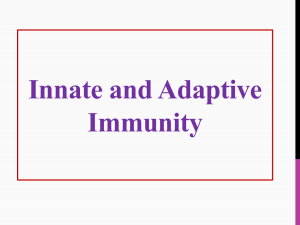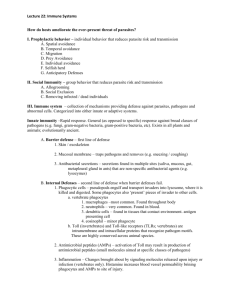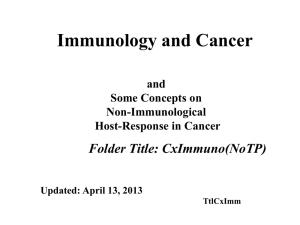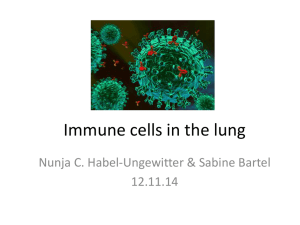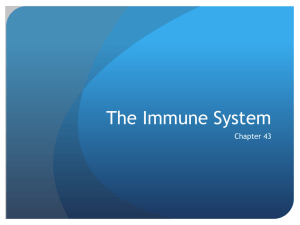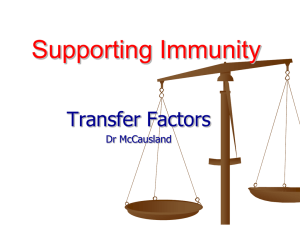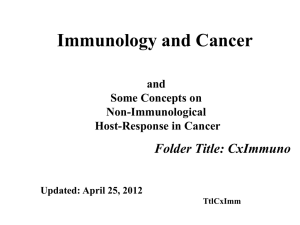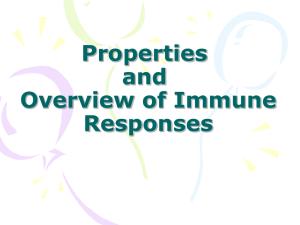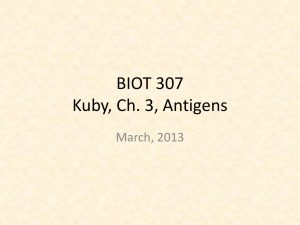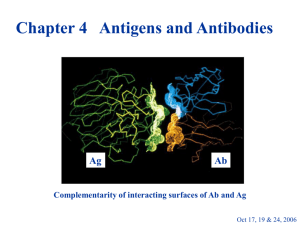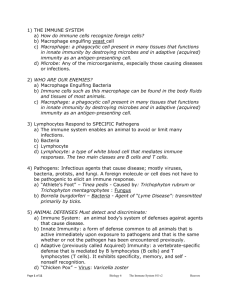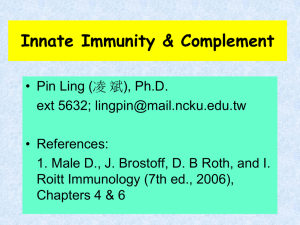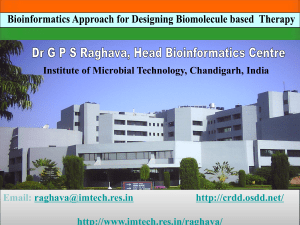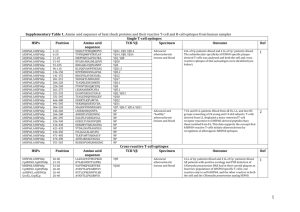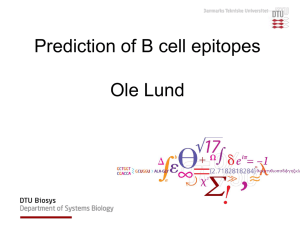Lec. 2 Antigens, Immunogens, Epitopes, and Haptens
advertisement
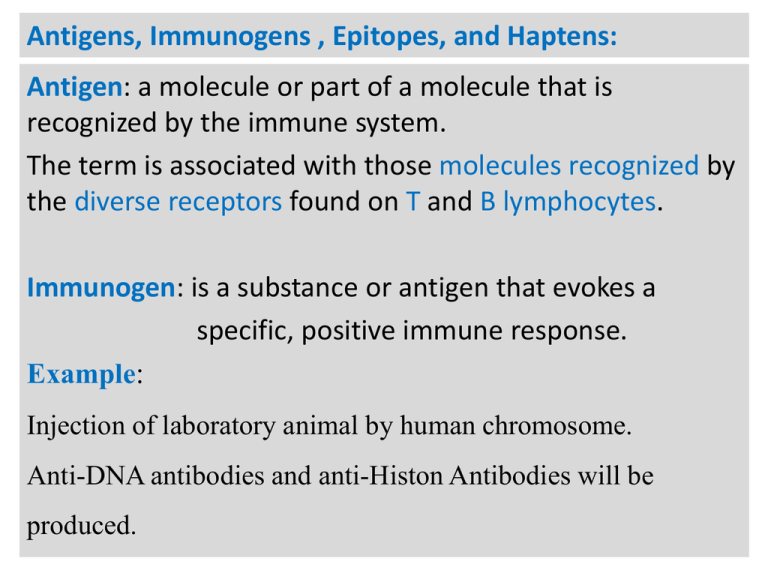
Antigens, Immunogens , Epitopes, and Haptens: Antigen: a molecule or part of a molecule that is recognized by the immune system. The term is associated with those molecules recognized by the diverse receptors found on T and B lymphocytes. Immunogen: is a substance or antigen that evokes a specific, positive immune response. Example: Injection of laboratory animal by human chromosome. Anti-DNA antibodies and anti-Histon Antibodies will be produced. Immunogenicity and Properties of immunogen: Immunogenicity is the capability of immunogen to activate immune response. In general, there are several properties of immunogen: 1- Foreignness: -Immune system can discriminate foreign substance. - foreign substance only stimulate immune response. 2- Size: it usually has a molecular weight of at least 10,000 Dalton. 3- It has a specific chemical nature: -Mainly proteins (polypeptide) -Carbohydrates, steroids, and lipids are poor immunogens. n 4- The chemical complexity: -Complexity is defined as a diversity in the chemical structure of organic polymers. -As the chemical complexity increase; the immunogenicity will be increased. Example: Homopolymers are poor immunogens regardless of size, while heteropolymers are considered strong immunogens. n Epitopes: The Antigenic determinants: The smallest part of an antigen or immunogen that can be recognized by somatically generated B and T receptors. -B cell receptors can discriminate epitopes whether they are: 1-free soluble molecules. 2-Surface-bound molecules. 3-Degraded fragments. -T cell receptors can bind only to epitopes which integrated with host cell surface molecules. Epitopes: the basic recognition unit: N The conformational and linear Epitopes: A single antigen molecule may have several different epitopes. Antigenic determinants may be either Conformational or Linear. A Conformational determinant is produced by folding of amino acid residues from different segments of linear amino acids. Conformational and linear Epitopes. n Conformational determinants usually are natural rather than denatured proteins. Immunodominant epitope is an epitope that can stimulate a greater antibody response than others. Superantigen: is a substance such as a bacterial toxin that is capable of stimulating multiple T lymphocytes, leading to release of relatively large quantities of cytokines. Phagocytosis process is not required for this type of activation. Superantigen: n Haptens: Small, non-biologic molecules that bind to immune cells receptors but cannot by themselves induce a specific immune response. Example: Land-Steiner’s experiment. Hapten injected in mice response. (2,4-dinitrophenyl-tyrosine) Carrier (protein) No immune injected in mice Positive immune response. Hapten-Carrier Conjugate injected in mice Anti-Hapten, and Anti-Carrier Abs T-cell dependent and T-cell independent Antigens: Antigens are classified as either T-cell dependent (TD) or T-cell independent (TI). T cell dependent antigen activates immune system depending on the immune system T-lymphocytes. T-cell dependent and T-cell independent Antigens: N T-cell dependent antigen T-cell independent Antigen Structural properties Complex Simple Chemical nature Proteins, glycoprotein, and lipoproteins Polysaccharide ; bacterial Lipopolysaccharide. Antibody - class induced IgG, IgM, IgA, IgD, and IgE Only IgM Immunological Memory response yes No Present in most Pathogenic microbes. yes No Innate and adaptive immunity: Innate (Natural) Immunity: Any inborn resistance that is present the first time a pathogen is encountered; it does not require prior exposure and is not modified significantly by repeated exposure to the pathogen over the life of individual. Acquired Immunity: A resistance that is weak or absent at the first exposure but increases dramatically with subsequent exposures to the same specific pathogen. Soluble mediators of innate immunity: 1-Proteins and enzymes: A variety of proteins and enzymes (present in human blood and tissue fluids) are considered as the first part of innate immunity. Examples: Proteins and enzymes Major microbial targets Effects Lysozyme and defensins Bacterial wall and memb. digestion Mannose binding proteins High Mann glycoprotein Opsonization and complement activation CRP Polysaccharides of microbes Opsonization Soluble CD14 LPS Opsonization. n 2-Cytokines, and Type I interferons: Cytokines: IL-1, IL-6, IL-12, and TNFα produced by activated phagocytes. Type I interferons: IFN- α produced by Dendritic cells. IFN-β Produced by fibroblasts. -INFs are rapidly produced, within 5 minutes by the infected cells (virus infection). -INFs activate phagocytosis of APCs, and apoptosis of infected cells. 3-Complement fragments C3b: Opsonization. Cells of Innate immunity: Innate immune response depends on the following blood leukocytes action: 1-Phagocytes: A-Monocytes and macrophages: blood stream and others B-Dendritic cells: lung, and GIT mucosa. 2-Granular leukocytes: A-Neutrophils, and eosinophils. B-Basophils and mast cells. Innate immune cells and cytokines interaction: n Innate and adaptive immunity: n Adaptive Immunity: Soluble mediators of adaptive immunity: 1-Cytokines and Interferons: -Cytokines: IL-2, IL-3, IL-10,IL-13. -Interferons: INF-γ (Gamma). 2-Immune cells: -Activated T cells -Activated B cells -N.K. cells. 3- Soluble and cell-bounded proteins: -The Immunoglobulins.
